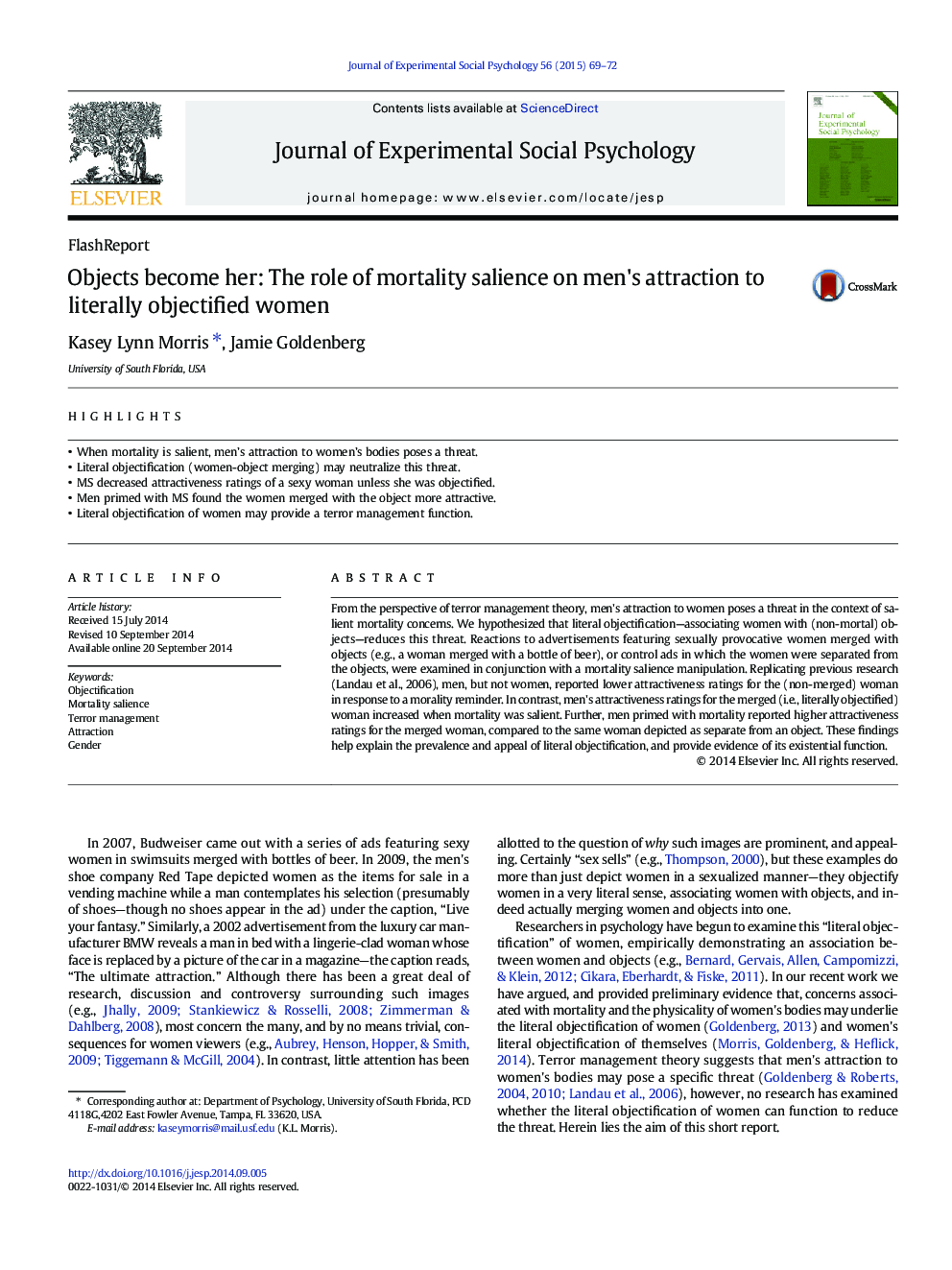| کد مقاله | کد نشریه | سال انتشار | مقاله انگلیسی | نسخه تمام متن |
|---|---|---|---|---|
| 947743 | 1475867 | 2015 | 4 صفحه PDF | دانلود رایگان |
• When mortality is salient, men’s attraction to women’s bodies poses a threat.
• Literal objectification (women-object merging) may neutralize this threat.
• MS decreased attractiveness ratings of a sexy woman unless she was objectified.
• Men primed with MS found the women merged with the object more attractive.
• Literal objectification of women may provide a terror management function.
From the perspective of terror management theory, men's attraction to women poses a threat in the context of salient mortality concerns. We hypothesized that literal objectification—associating women with (non-mortal) objects—reduces this threat. Reactions to advertisements featuring sexually provocative women merged with objects (e.g., a woman merged with a bottle of beer), or control ads in which the women were separated from the objects, were examined in conjunction with a mortality salience manipulation. Replicating previous research (Landau et al., 2006), men, but not women, reported lower attractiveness ratings for the (non-merged) woman in response to a morality reminder. In contrast, men's attractiveness ratings for the merged (i.e., literally objectified) woman increased when mortality was salient. Further, men primed with mortality reported higher attractiveness ratings for the merged woman, compared to the same woman depicted as separate from an object. These findings help explain the prevalence and appeal of literal objectification, and provide evidence of its existential function.
Journal: Journal of Experimental Social Psychology - Volume 56, January 2015, Pages 69–72
